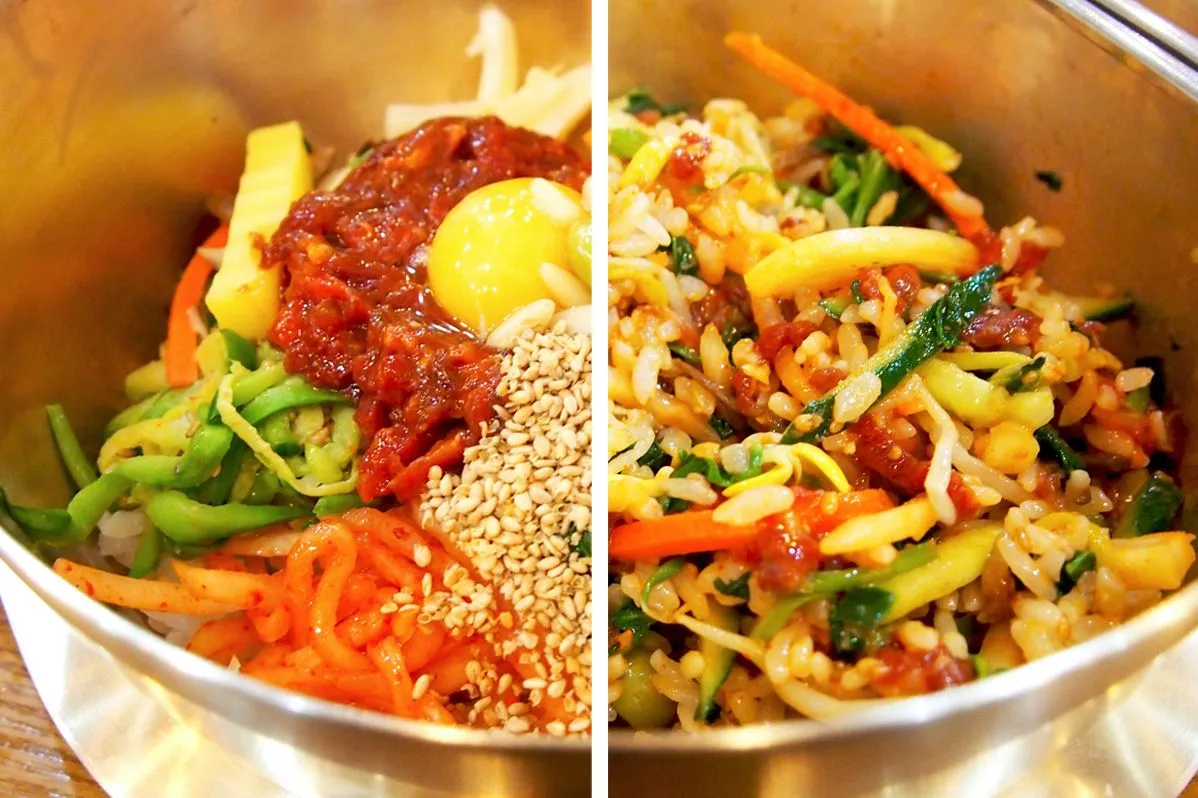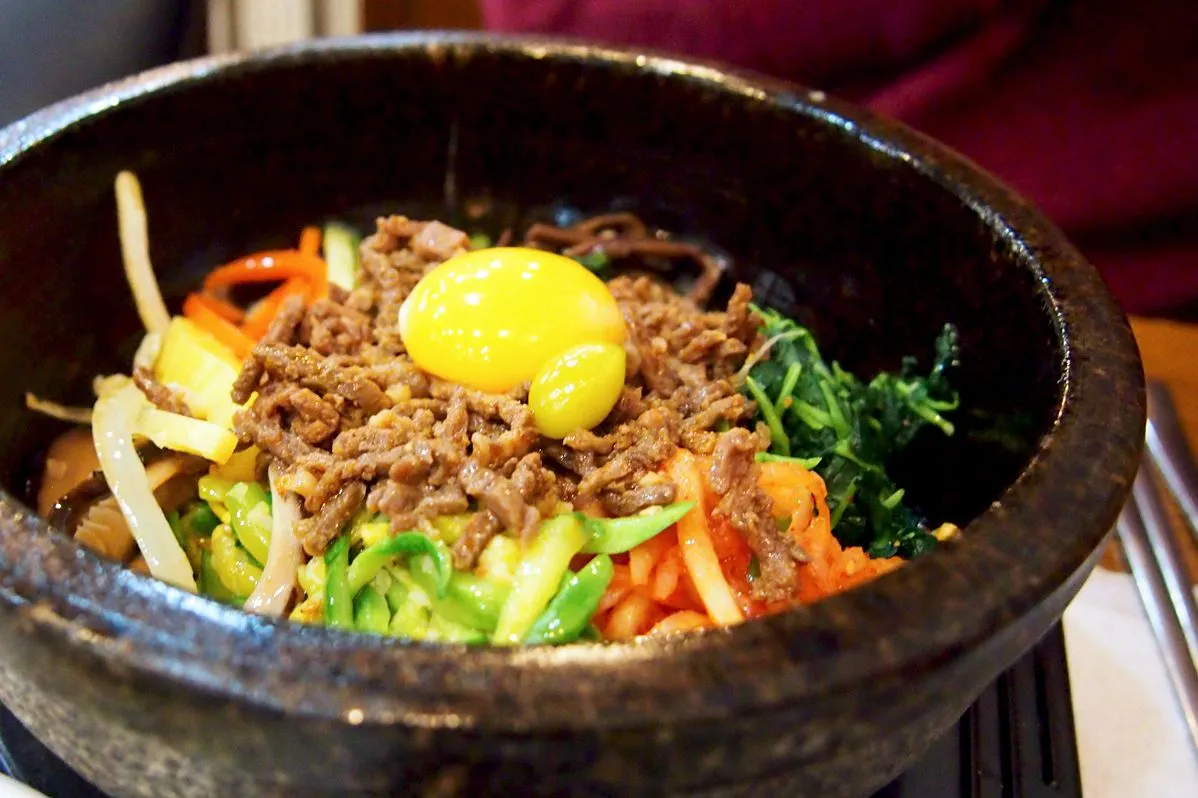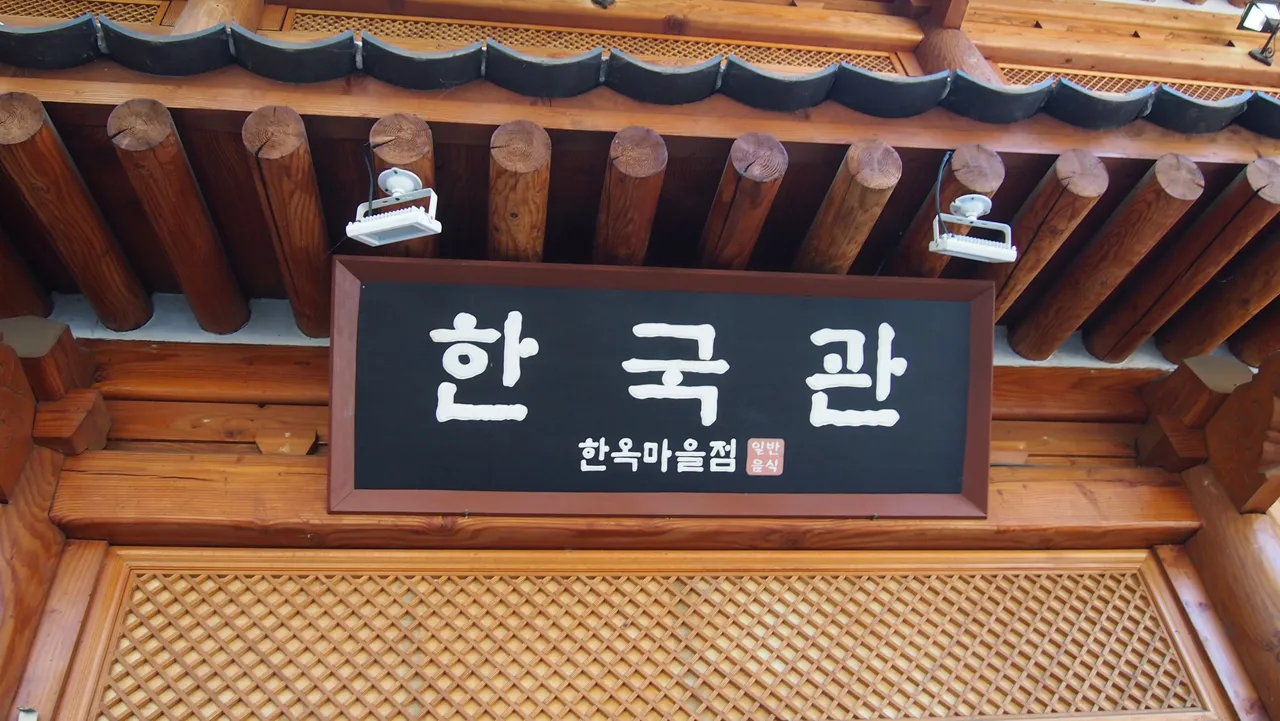Bibim means to mix and bap means rice, and together they form bibimbap, a popular Korean dish where a bowl of steamed rice is topped with a variety of ingredients and the eater mixes it all up to his tastes with a savoury sauce. In South Korea, different variations exist in different cities and Jeonju is known for its raw beef version. I was backpacking in Jeonju last year and was fortunate to have someone local show me around. For lunch, she took me to Hankookkwan (한국관) a restaurant known for bibimbaps in the Hanok Village neighborhood. We ordered a raw beef version and also a dolsot bibimbap which comes in a hot stone bowl.

Raw beef bibimbap before mixing, isn't it beautiful?
Before our food came, we were served our complimentary panchan which are a variety of little side dishes for snacking on. Each Korean restaurant gives their own assortment of panchan and it’s always free. It’s one of my favourite parts about eating Korean food because it’s always a fun surprise to see what dishes will arrive. North American Korean restaurants will do this as well, but usually it’s not a s generous or interesting.

Great selection of panchan here with different kimchis, onion pancake, potato salad and more.
My raw beef bibimbap arrived in a beautiful gold bowl. Jeonju is a town of history and many old palaces so it felt quite regal to be served in such a dish (though the restaurant itself is very casual). I think this was the most beautiful bibimbap I’ve ever eaten. Vegetables like zucchini, spinach, carrots and fernbrake were arranged so neatly and there was bright red mound of seasoned minced beef in the middle. The scattering of sesame seeds and egg yolk added to the lovely appearance of the dish. The small greenish ball resting on the egg is a gingko nut and this was my first time trying one. They are really tasty and starchy like a potato with a thin pea like skin on the outside. I mixed everything together with a spicy gochujang pepper paste before eating.

Before and after mixing.
My new friend’s dolsot bibimbap came in a thick hot stone bowl and had the same toppings as mine, except hers was with cooked beef and no sesame seeds. This dish is meant to be mixed very quickly with the sauce and left to rest because the rice touching the bowl will become crispy from the hot stone. While you’re waiting for your rice to crisp, you can start eating the rice on top. This version of bibimbap is more common in South Korea and I’ve seen it at many restaurants in Toronto. I recommend you try it if you come across it.

Hot stone bowl bibimbap with cooked beef.
I love bibimbaps because they are really fun to eat and the toppings can vary but it always has a lot of different textures and flavours. This restaurant doesn’t have an English name written on the outside but Hankkookwan is the phonetic pronunciation of its Korean name 한국관. Keep an eye out for this sign:

Have you tried bibimbap before? How did you like it? Let me know if you have any questions! Thanks for reading!
Hankookkwan (한국관)
31 Taejo-ro, Wansan-gu, Jeonju, Jeollabuk-do, South Korea
+82-63-232-0074
More info.
Follow me at @jellyfishdonut for more posts on food and travel!